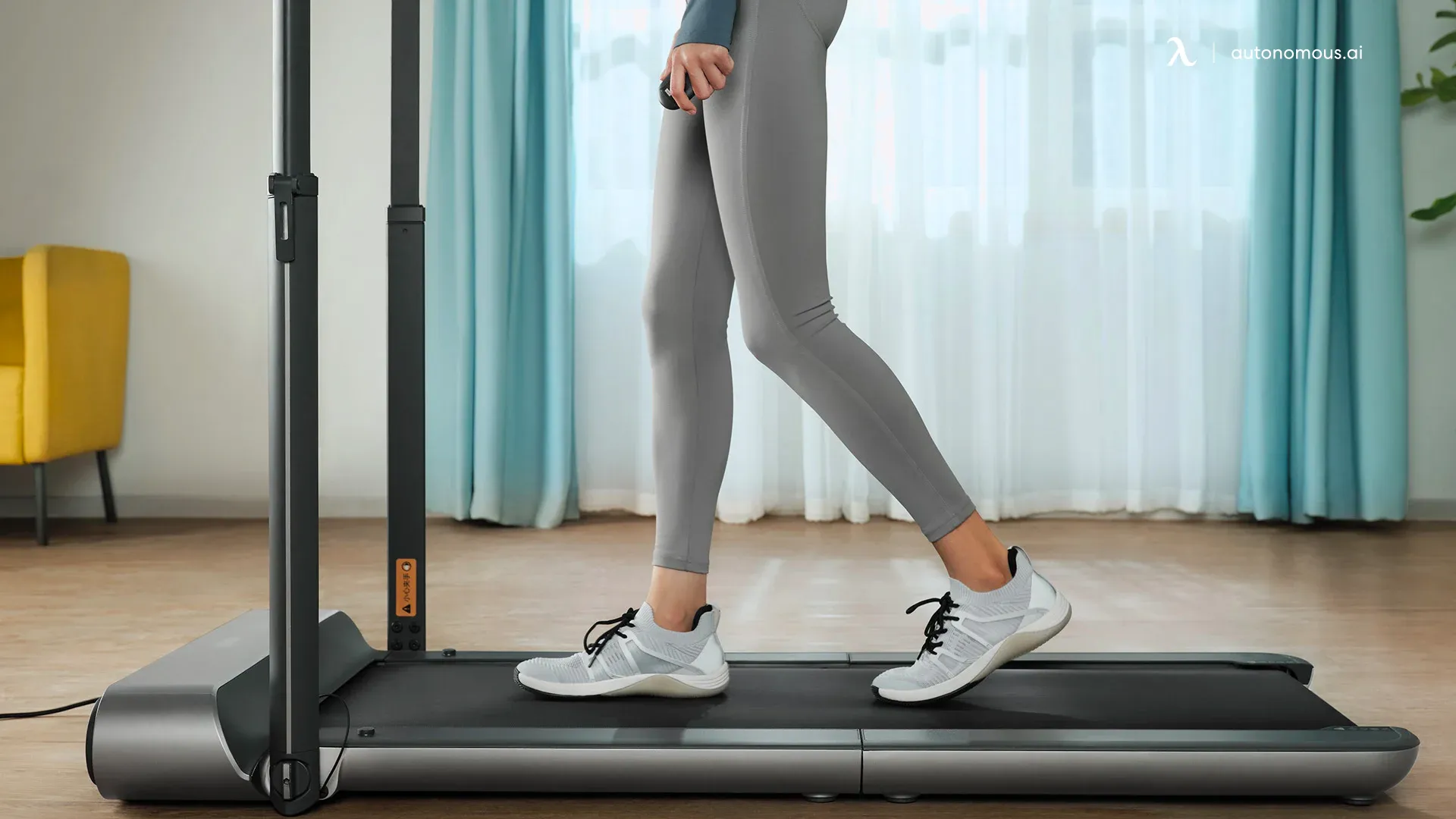
Stairmaster vs. Treadmill: Which Is Better for Your Workout?
Table of Contents
If you’re debating stairmaster vs. treadmill workouts, you’ll have to consider how you plan to use the machine in the first place .
The stairmaster will offer a better cardio workout compared to walking on the treadmill. A great aerobic workout that is also quite taxing on the heart and lungs is stair climbing.
However, the treadmill wins the aerobic battle between stair climbers and mini treadmills if you want to run. The treadmill allows for faster movement and has a cardio focus, whereas the stairmaster workout combines resistance and cardio.
Carry on reading to see the winner of the stair climber vs. treadmill battle.
1. StairMaster vs. Treadmill
Here is a summarized table comparing stairmaster and treadmill:
| Feature | StairMaster | Treadmill |
|---|---|---|
| Workout Type | Simulates climbing stairs | Simulates walking, jogging, or running |
| Muscles Targeted | Glutes, quadriceps, hamstrings, calves | Legs, glutes, core (varies with incline) |
| Impact on Joints | Low impact | Varies (higher impact when running, low when walking) |
| Calorie Burn | High calorie burn due to constant step motion | Variable (higher burn with running and incline) |
| Cardiovascular | Excellent for cardiovascular endurance | Excellent for cardiovascular endurance |
| Weight Loss | Effective for weight loss | Effective for weight loss |
| Versatility | Limited versatility (mainly stair climbing) | Highly versatile (walk, jog, run, incline options) |
| Space Requirement | Typically larger and taller | Generally more compact, requires less vertical space |
| Ease of Use | Can be challenging for beginners | User-friendly, adjustable to various fitness levels |
| Noise Level | Generally quieter | Can be noisier, especially when running |
| Cost | Often more expensive | Wide range of prices, generally more affordable |
| Maintenance | Can require more maintenance | Generally easier to maintain |
This comparison should help you decide which machine might be better suited for your fitness goals and space constraints.
2. Key Differences
2.1. Workout Type
The StairMaster is a cardio machine that replicates the motion of climbing stairs, requiring a continuous stepping motion. This movement engages the legs in a way that’s quite different from other cardio equipment, creating a unique challenge for lower body endurance and strength. Unlike running or cycling, the StairMaster’s vertical, repetitive steps intensify muscle engagement, forcing the user to push through each step to maintain balance and momentum. This machine allows users to adjust the speed to customize their pace, but the mechanics always demand steady effort, leading to a constant, challenging workout.
The treadmill, on the other hand, provides more versatility, allowing users to walk, jog, or run on a moving belt. Treadmills offer a range of workout intensities by enabling changes in both speed and incline. Whether it’s a gentle walk or an intense uphill sprint, the treadmill’s adjustable settings can create a workout that ranges from low to high intensity. This flexibility allows users to tailor the treadmill workout to their goals—whether it’s endurance building, weight loss, or interval training—and switch easily between different types of motion, like walking and sprinting, in a single session.
2.2. Muscles Targeted
The StairMaster primarily targets the muscles in the lower body, including the glutes, quadriceps, hamstrings, and calves. Each step requires the legs to push up and support body weight repeatedly, which emphasizes muscle engagement in the thighs and glutes. This movement not only builds strength but also endurance in these muscles, as they are constantly active throughout the workout. The stair-climbing motion also challenges stabilizing muscles and promotes muscular endurance, which can be beneficial for daily activities and sports that require strong lower-body function.
The treadmill engages a broader range of muscles depending on the type of workout performed. Walking or jogging on a flat surface targets the legs and glutes with moderate intensity, while running or walking on an incline increases the load on the glutes and hamstrings, activating them more powerfully. The treadmill also recruits core muscles, especially when running, as these muscles work to stabilize the torso and maintain balance on the moving surface. Adjusting the incline further shifts muscle engagement to the calves and hamstrings, allowing for a well-rounded lower-body workout.
2.3. Impact on Joints
The StairMaster is known for providing a low-impact workout that is easier on the joints, making it an ideal choice for individuals with joint concerns or those seeking a gentler form of cardio. Unlike running, the stair-climbing motion does not involve a heavy landing impact, which minimizes strain on the knees and ankles. As a result, the StairMaster is a great option for building lower body strength and endurance without the joint stress that can come from high-impact exercises.
The treadmill offers variable impact levels depending on the workout type. Walking on a treadmill has relatively low impact, making it joint-friendly for most people. However, running on a treadmill introduces higher impact, which can increase the strain on the knees, hips, and ankles, especially over prolonged sessions or at higher speeds. Incline settings can reduce this impact slightly by shifting weight distribution, but individuals with joint sensitivity may still find running to be challenging. For those concerned about impact, alternating between walking and light jogging on the treadmill can help reduce joint stress while still providing an effective cardio workout.
2.4. Calorie Burn
Calorie burn is an essential aspect for anyone aiming to maximize workout efficiency. The StairMaster generally offers a high calorie burn due to the continuous, intense stepping motion, which engages large muscle groups like the glutes, quads, and hamstrings, keeping the heart rate elevated throughout the workout. This consistent effort burns more active calories—the calories expended during physical activity as opposed to resting, making it ideal for those aiming to increase calorie burn quickly and efficiently.
On the other hand, the treadmill offers more variable calorie burn depending on speed, incline, and workout intensity. Walking or jogging at a moderate pace burns fewer calories than running or using a steep incline, allowing users to adjust the workout based on personal calorie goals. By modifying these settings, treadmill users can balance active calories and total calories—total calories include those burned both during exercise and while the body is at rest.
For individuals with sedentary lifestyles, such as office workers, both machines can help increase daily calorie expenditure to offset the calories burned at rest. Adding cardio sessions can boost overall energy expenditure and counteract the effects of prolonged sitting. Deciding between the StairMaster or treadmill for an office worker may depend on specific goals: the StairMaster offers a quick, intense calorie burn for those with limited time, while the treadmill provides the option to vary intensity, making it suitable for more gradual or endurance-focused calorie-burning sessions.
2.5. Versatility
The StairMaster is primarily designed for stair-climbing exercises, which makes it somewhat limited in versatility. Its main function is to simulate the action of climbing stairs, providing a challenging workout for the lower body. While this focused approach is effective for muscle building and cardiovascular endurance, the StairMaster doesn’t allow for variations like walking, jogging, or sprinting. Its intensity is adjusted mainly through speed, but the movement pattern remains the same, making it a reliable yet specialized cardio option.
In contrast, the treadmill is highly versatile, allowing users to walk, jog, run, and simulate hill climbing by adjusting the incline settings. This variety lets users adapt the treadmill to different workout goals, whether it’s a brisk walk for low-impact cardio, an uphill climb for muscle strengthening, or high-speed sprints for intense cardio. The treadmill’s flexibility in workout modes makes it a suitable choice for users of all fitness levels, allowing for both low and high-intensity workouts within one machine.
2.6. Space Requirement
The StairMaster is typically larger and taller than a treadmill, which means it requires more vertical space to accommodate the height of the machine and the stepping motion. This can be a factor for home gyms with low ceilings, as users need ample headroom to comfortably use the machine without feeling cramped. StairMasters also have a relatively large footprint, so they require a dedicated space for safe and effective use.
On the other hand, while a treadmill is usually more compact vertically, it requires a significant amount of floor space due to its length. Some treadmills come with foldable options to reduce storage space when not in use, but the area needed for setup can still be substantial. Both machines require planning for a designated workout area, but the StairMaster’s height and footprint make it more challenging to fit into smaller spaces compared to a treadmill.

2.7. Noise Level
The StairMaster is generally quieter due to its smooth, continuous stepping motion. Since there’s no heavy impact, as found in running, the noise level remains relatively low. This makes the StairMaster a good option for shared living spaces or apartments where noise might be a concern. The motor and mechanics of the machine do produce some sound, but it’s typically less noticeable than the impact noises of high-speed treadmill running.
The treadmill can be noisier, especially when running at high speeds or inclines. The pounding sound of footsteps on the moving belt can resonate, particularly in smaller or enclosed spaces. Treadmills with built-in shock absorption may reduce some noise, but the overall sound level is still likely higher than a StairMaster, particularly when used for jogging or sprinting. For those with noise sensitivity or in noise-sensitive environments, a treadmill may require additional soundproofing considerations.
2.8. Cost and Maintenance
The StairMaster is often more expensive than a treadmill due to its specialized design and mechanical complexity. Its intricate stepping mechanism and need for stability and durability often result in higher upfront costs. Additionally, StairMasters may require more maintenance over time, as their moving parts are under continuous strain during use. Regular servicing and potential part replacements can add to the long-term cost, making it a more substantial investment.
Treadmills are available across a broader price range, from budget-friendly models to high-end versions with advanced features. In general, treadmills are easier to maintain than StairMasters, as they have fewer specialized moving parts. Regular maintenance typically includes belt lubrication, motor checks, and occasional part replacements, which are often manageable and don’t require extensive servicing. This accessibility in price and maintenance makes treadmills a popular choice for home gyms where ease of use and long-term affordability are priorities.
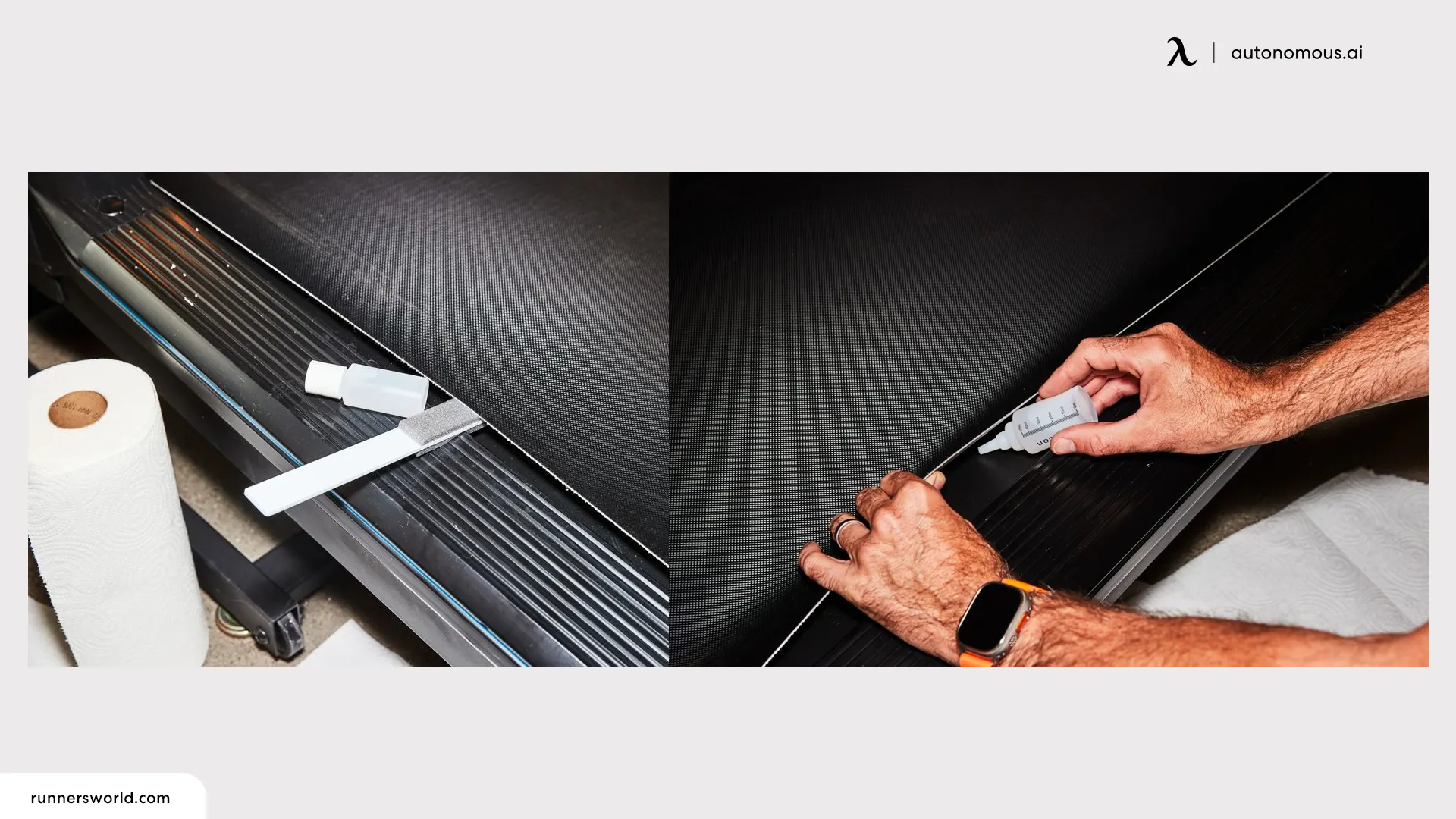
3. Key Similarities
Cardiovascular Benefits: Both the stairmaster and treadmill provide excellent cardiovascular workouts. They help improve heart health, increase stamina, and enhance overall cardiovascular endurance.
Weight Loss: Both machines are effective tools for weight loss. Regular use, combined with a healthy diet, can help users burn calories and shed excess weight.
User-Friendly: Modern stairmasters and treadmills come with user-friendly interfaces and various pre-set workout programs to guide users through their exercise routines.
Indoor Convenience: Both machines offer the convenience of indoor workouts, allowing users to exercise regardless of weather conditions or time of day.
Fitness Level Accommodation: Both the stairmaster and treadmill can accommodate different fitness levels. They allow users to adjust the intensity of their workouts to match their fitness goals and capabilities.
4. Stairmaster vs. Treadmill: Pros and Cons
The muscles that are primarily used in stair climbing are the glutes, calves, and quadriceps. Because you are only climbing stairs, your posterior chain muscles will gain a lot of strength.
This makes the stairmaster a particularly effective exercise for your calves and glutes. You can also get a great upper body and core exercise akin to running if you don't hang onto the handrails. However, if you hold onto the handrails the entire time, your upper body won't be used.
Walking and running engage every muscle in your lower body as well as your core and arms if you don’t hold onto the handrails. Increasing the incline targets the glutes, calves, and hamstrings even more.
- Pros and Cons of Stairmaster Machines
All cardio machines have advantages and disadvantages, but the majority are effective when improving cardiovascular fitness. As for those wishing to compare different pieces of home gym equipment, let's take a closer look at some of the benefits and cons of stairmaster machines.
If you are unfamiliar, these are the cardio machines that are effectively a never-ending escalator that work your glutes, thighs, and hamstrings like magic. You can find these at most gyms. These machines offer several advantages, such as helping to enhance muscle mass and cardiovascular fitness, low impact on joint health, simple heart rate monitoring, and the ability to be used with interval training.
Unfortunately, stairmaster machines usually only allow you to work out your lower body, and the incline position can be a hassle for people with back problems. Since there are limitations on the types of exercises you can perform on stairmaster machines, they can end up being more tedious than other cardio equipment.
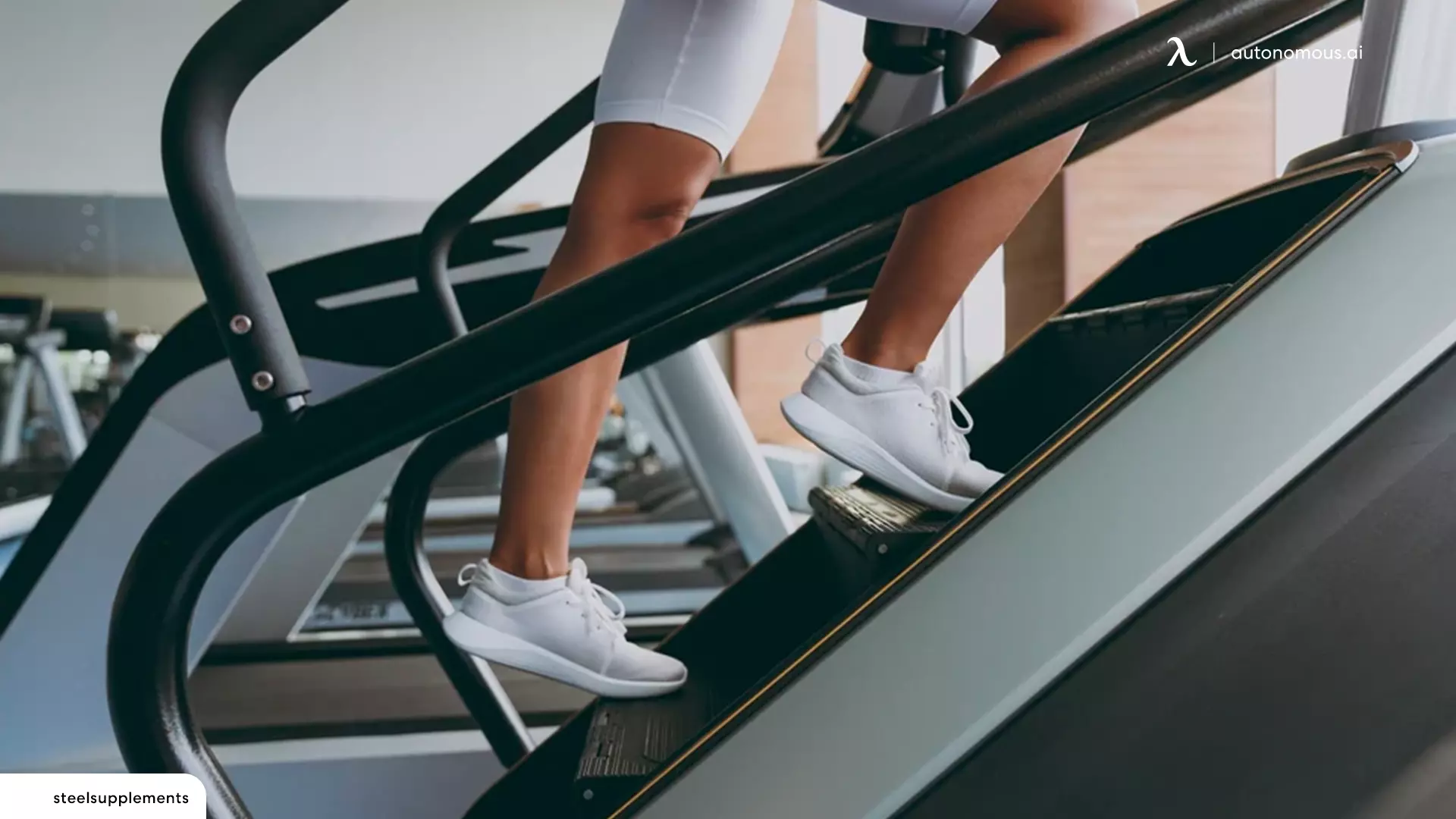
- Pros and Cons of Treadmills
The treadmill is an all-star performer found at any and every gym. It is perfect for individuals who want to add more jogging, interval training, sprinting, or any other type of physical activity.
Essentially, the beauty of using a treadmill is that it has a lower impact on your back compared to walking or jogging on the uneven or bumpy ground outside. Of course, walking or jogging outside in the fresh air and sunshine is free, but buying a treadmill or joining a gym will cost you money.
As for people who don't have the time or feel unsafe leaving the house to work out, treadmills can be incredibly convenient. They provide a range of incline options to make your workout more challenging and mimic elevation to raise your heart rate to the ideal level, which you can simply monitor on your screen.
Treadmills, like the stairmaster, focus more on the lower body than the upper body. The exercises you can perform while on a treadmill are, however, more varied than those on a stairmaster.
Since using a stairmaster demands more balance, it can be challenging to include upper body exercises without the risk of falling or getting hurt. You can simply incorporate arm exercises during your walk or run thanks to a treadmill's strong design and stability.
5. Best Treadmills
5.1. WalkingPad Foldable Walking Treadmill C2
If you're looking for a foldable under-desk walkable treadmill to pop out at home or at work, you'll be happy to know that the WalkingPad C2 does the job. Similar to how you would open a book, the treadmill unfolds and (rather unnervingly) clicks into place. This office treadmill under the desk is sleek and fashionable, with a little screen at the front that shows your live metrics. We appreciated the simplicity of the design.
5.2. WalkingPad Double-Fold Walk-Run Treadmill X21
The WalkingPad X21 is most suited for people with limited space, who live upstairs, and who live in a house with shared walls, such as an apartment or condo. Additionally, it is appealing if you want a curved treadmill that can be tucked away in a closet or a room corner out of sight.
To allow human-treadmill interaction, it can be connected through NFC on a cell phone. Furthermore, it has a concealed LED display with an integrated panel design, and once the machine is running, the numbers on the screen are clearly visible.
5.3. WalkingPad Foldable Walking Treadmill A1 PRO
Using a WalkingPad A1 Pro may be your best option if you often find yourself too tired to exercise after a long workday and have a standing desk that you haven't been using. This will make sure that you get some daily exercise in.
Even if it takes a while to adjust your workflow to walking while working, you'll get used to it quickly. The treadmill is simple to set up. Before you realize it, most of your workday will be spent on foot.
6. The Five Best Stairmasters
You shouldn't be too surprised to find a stairmaster workout for weight loss on this list; after all, these guys invented the class and continue to produce top-notch exercise equipment.
Furthermore, you have to commend them for the brand name, which says it all. There is no denying the fame of stairmaster and its stair-climbing equipment, but previously, it was exclusively available in commercial gyms.
These designs simply haven't been a good option for most home gyms because of their size and price.
6.1. Stairmaster StepMill 3
Well, the StepMill 3 (SM3) changes all of that. It is a smaller, significantly more affordable model designed specifically for home use.
The SM3 is among the most compact stair climbers available, taking up just 46′′ L x 29′′ W of floor space.
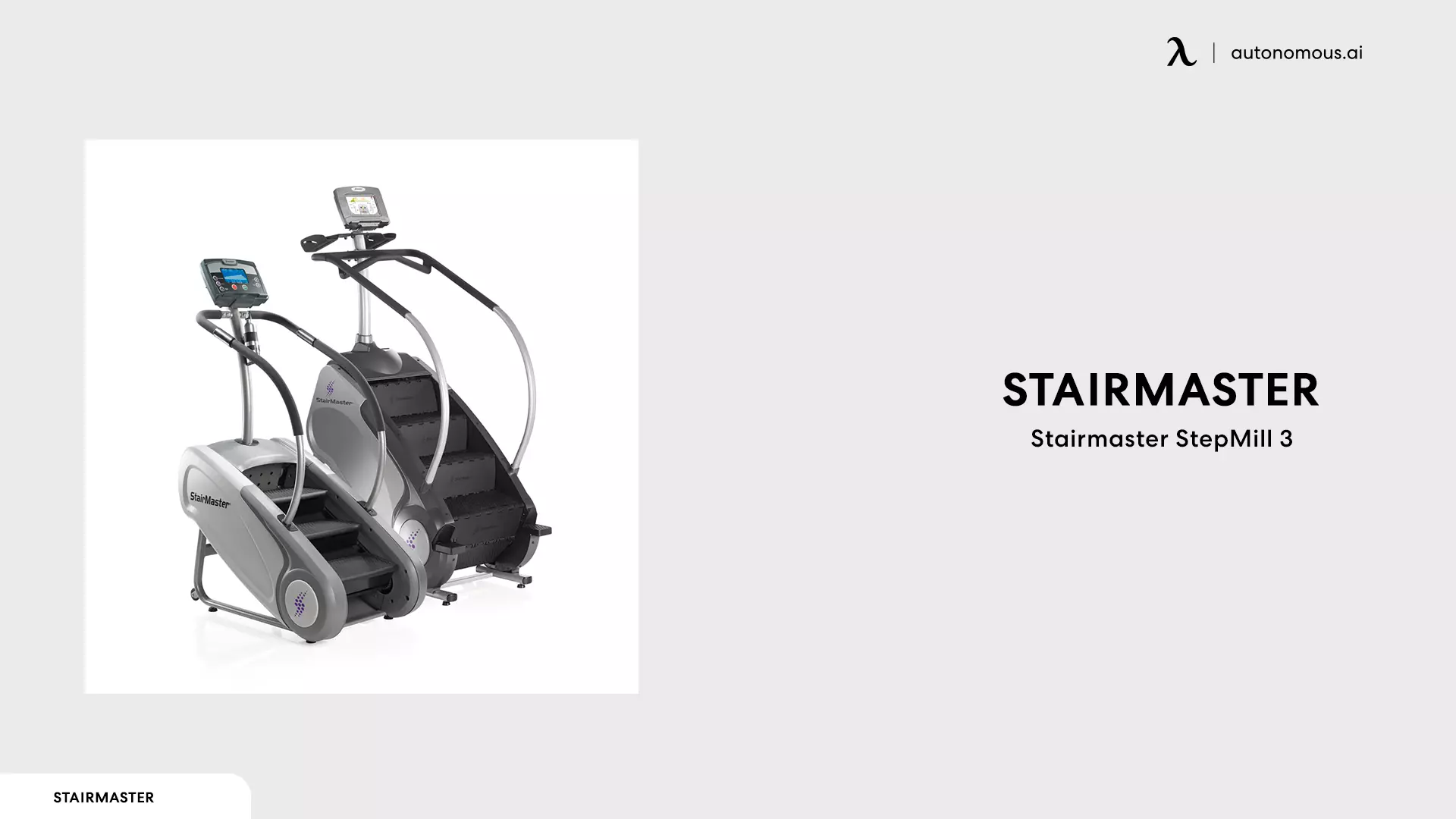
6.2. Spirit XS895
Spirit is a great company in general because it offers strong products and then backs them up with fantastic warranties (they’re also quite reasonably priced).
Although you can modify the incline angle on this machine anywhere between 43° and 60° to change the step height between 10′′ and 14′′, the stepping pattern is still mainly vertical.
You can also exercise using your arms on the XS895, much like an elliptical. With its 23 lb. flywheel, this stepper can provide a smooth yet challenging complete body workout. Moreover, it has 20 different degrees of resistance, giving you complete control over how difficult your fun treadmill workouts are.
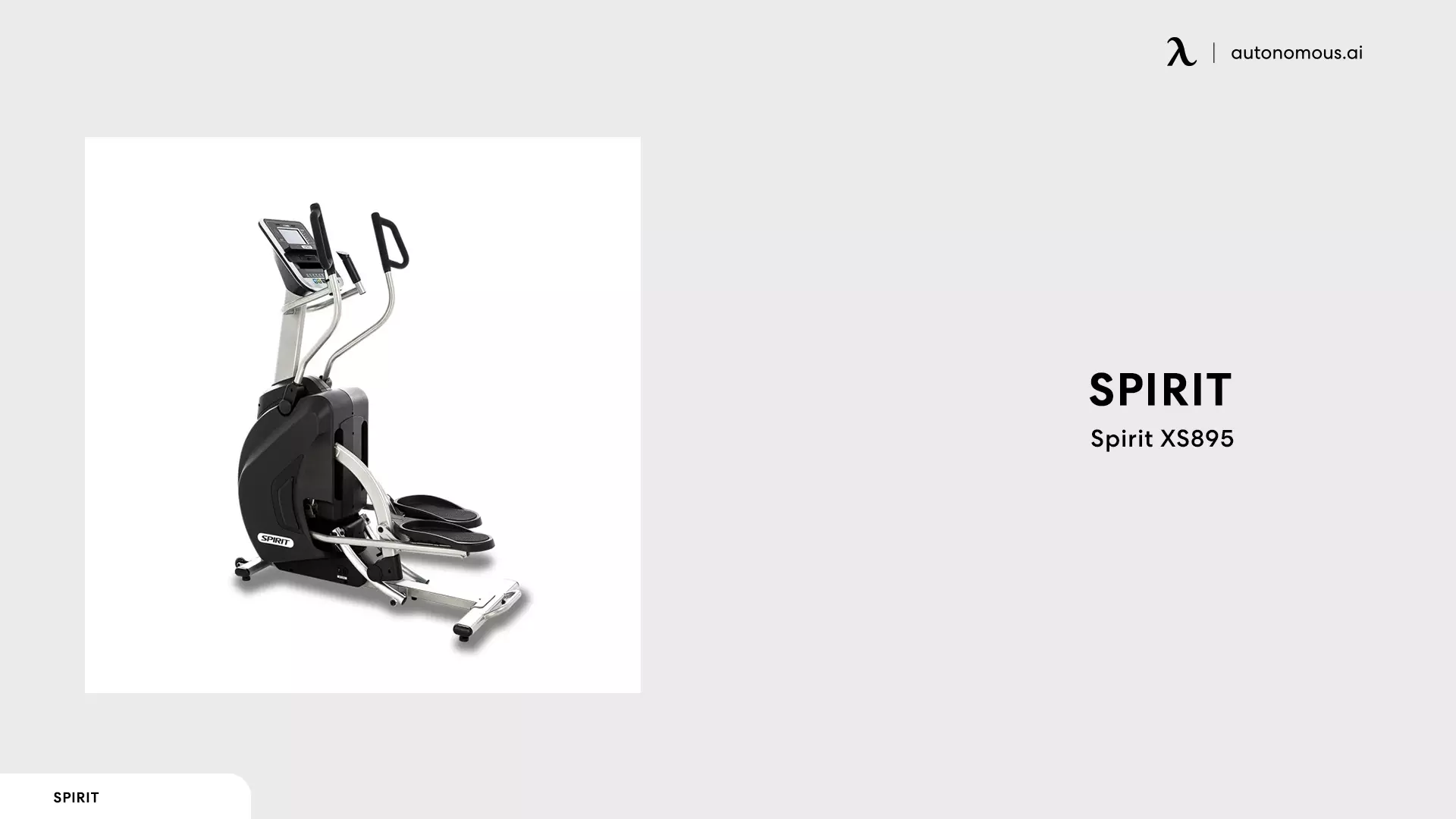
6.3. Jacobs Ladder GTL
The Jacobs Ladder brand is most known for its climbing systems, but with the Stairway GTL, it has stepped into the world of traditional stair climbing. Another rotating stair system that simulates climbing a real flight of stairs is this GTL. It is a clear winner in the stairmaster vs. treadmill debate.
Additionally, the steps and frame of the GTL are both made of heavy-duty, powder-coated steel, allowing it to support users weighing up to 350 lb. The steps on the GTL are 8′′ high and 9′′ deep, closely resembling the stairs you can find in your own home.
In contrast to the original Stairway by Jacobs Ladder, which automatically adjusts your speed based on your position on the stairs and your waist belt, the GTL can be controlled by the console’s up and down buttons.
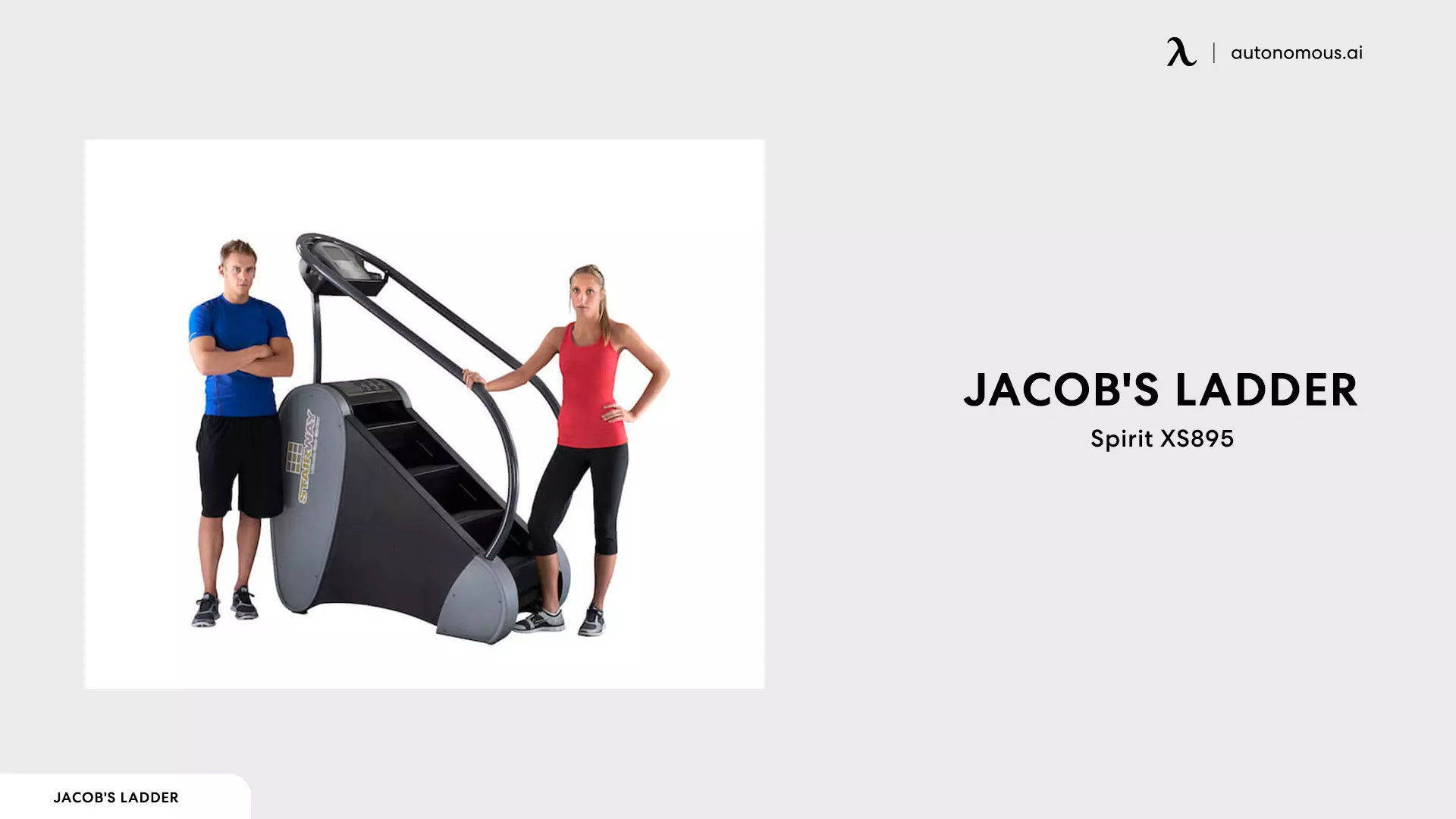
6.4. Bowflex Max Total 16
The Max Total 16 and the H14 are quite similar in many ways, although the Max Total 16 is slightly more expensive and has a significantly shorter warranty. This machine would have ranked much higher on this list if Bowflex had provided a better warranty.
Nevertheless, depending on your needs, we believe this HIIT trainer still has a lot to offer.
Performance-wise, the Max Trainer 16 has a dual-rail design for increased stability, huge, multi-grip grips, and 20 magnetic resistance levels.
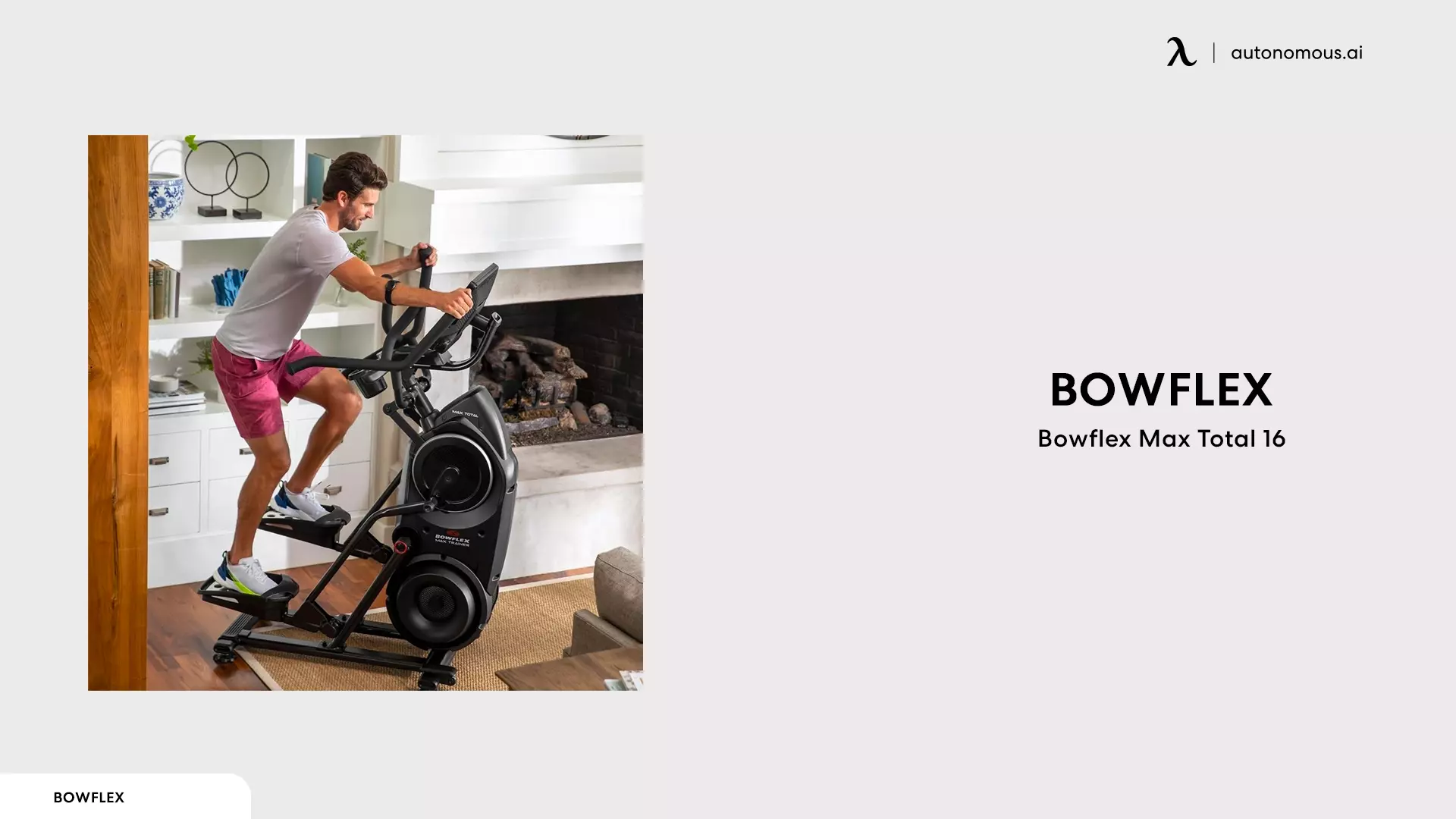
6.5. Spirit CS800
Spirit's CS800 is a more traditional stepper; it lacks the movable grips and customizable incline angles of the XS895. However, in order to guarantee smooth stair-climbing operation, the CS800 also makes use of the same 23 lb. flywheel.
With a maximum step height of 16 inches on this model, you can, if you'd like, mimic ascending stairs two at a time. The 20 levels of resistance included with the CS800 allow users of all fitness levels to be challenged. In fact, every aspect of this stepper is top-notch.
Given that this machine weighs only about 175 pounds, 450 lbs weight capacity of the powder-coated steel frame is all the more remarkable.

7. FAQs
7.1. Is a StairMaster better than a treadmill?
The answer to this question depends on your fitness goals. The StairMaster is excellent for building lower body strength and endurance with a low-impact workout that’s gentle on the joints. It specifically targets the glutes, quadriceps, hamstrings, and calves. On the other hand, a treadmill offers versatility with options to walk, jog, or run and allows for adjustable inclines to simulate hill climbing. It's great for overall cardiovascular fitness and can be tailored to suit a wide range of fitness levels.
7.2. StairMaster or treadmill for belly fat?
Both the StairMaster and treadmill can be effective tools for reducing belly fat as part of a comprehensive weight loss program that includes a healthy diet and overall body exercise. Cardiovascular exercises, in general, help burn calories, and reducing belly fat involves losing overall body fat. Consistency and intensity are key, regardless of which machine you use.
7.3. What burns more calories: treadmill or StairMaster?
Calorie burn can vary based on the intensity and duration of the workout. Generally, the StairMaster tends to burn more calories due to the continuous and intense stepping motion that keeps your heart rate elevated. However, running on a treadmill at high speeds or with a significant incline can also result in a high calorie burn. Personal preference and the ability to maintain intensity play significant roles in determining which machine will burn more calories for you.
7.4. StairMaster vs. incline treadmill for glutes?
Both the StairMaster and an incline treadmill can effectively target the glutes. The StairMaster's climbing motion provides a continuous workout for the glutes, making it highly effective for building and toning these muscles. An incline treadmill also targets the glutes, especially when walking or running at a steep incline. The choice depends on which motion you find more comfortable and sustainable over long workouts.
7.5. StairMaster or treadmill for abs?
Both machines can indirectly work the abs by engaging the core for stability and balance during the workout. The StairMaster requires significant core engagement to maintain posture and balance while stepping. Running or walking on a treadmill, especially with an incline, also engages the core to stabilize the body. For targeted abdominal exercises, complementing your cardio workouts with specific ab routines will be more effective.
7.6. Stairmaster vs. Treadmill - What Is Best for Fat Loss?
The treadmill can be your best option if you are comparing indoor fitness equipment to see what will work best for fat loss. Even though both can help in fat loss by raising your heart rate and burning calories, the treadmill is more adaptable and allows for more intensive exercise as well as the possibility for variations, including weights.
Although it burns a lot of calories, the stairmaster is only available in a few variations and challenge levels, which puts it in second position.
The treadmill is a better option for overall fat loss whether you want to lose weight in your thighs, midsection, or anywhere else.
Unfortunately, as shown by research, we are unable to specifically target problem areas for fat reduction, such as stubborn belly fat, but we can notice an improvement in most places by increasing our general fat burn.
The best technique to lose stubborn belly fat on the treadmill or stairmaster is to focus on the underlying muscle. You can perform exercises that target this area on either the stairmaster or treadmill.
Which One Should You Choose?
As you can see, there isn't a clear winner between the stairmaster and the treadmill; it really depends on your training objectives and the circumstances.
The stairmaster is better for bodybuilders and some athletes, whilst the treadmill is better for fat loss and general interval training techniques.
We suggest that you test both types of equipment at your desired intensity to decide whether the stairmaster or treadmill is more comfortable for you. This is because, just as with any other form of exercise, it is best to adjust the intensity of your workout to your current training level.
Stay connected with us!
Subscribe to our weekly updates to stay in the loop about our latest innovations and community news!
Interested in a Link Placement?
Spread the word
.svg)

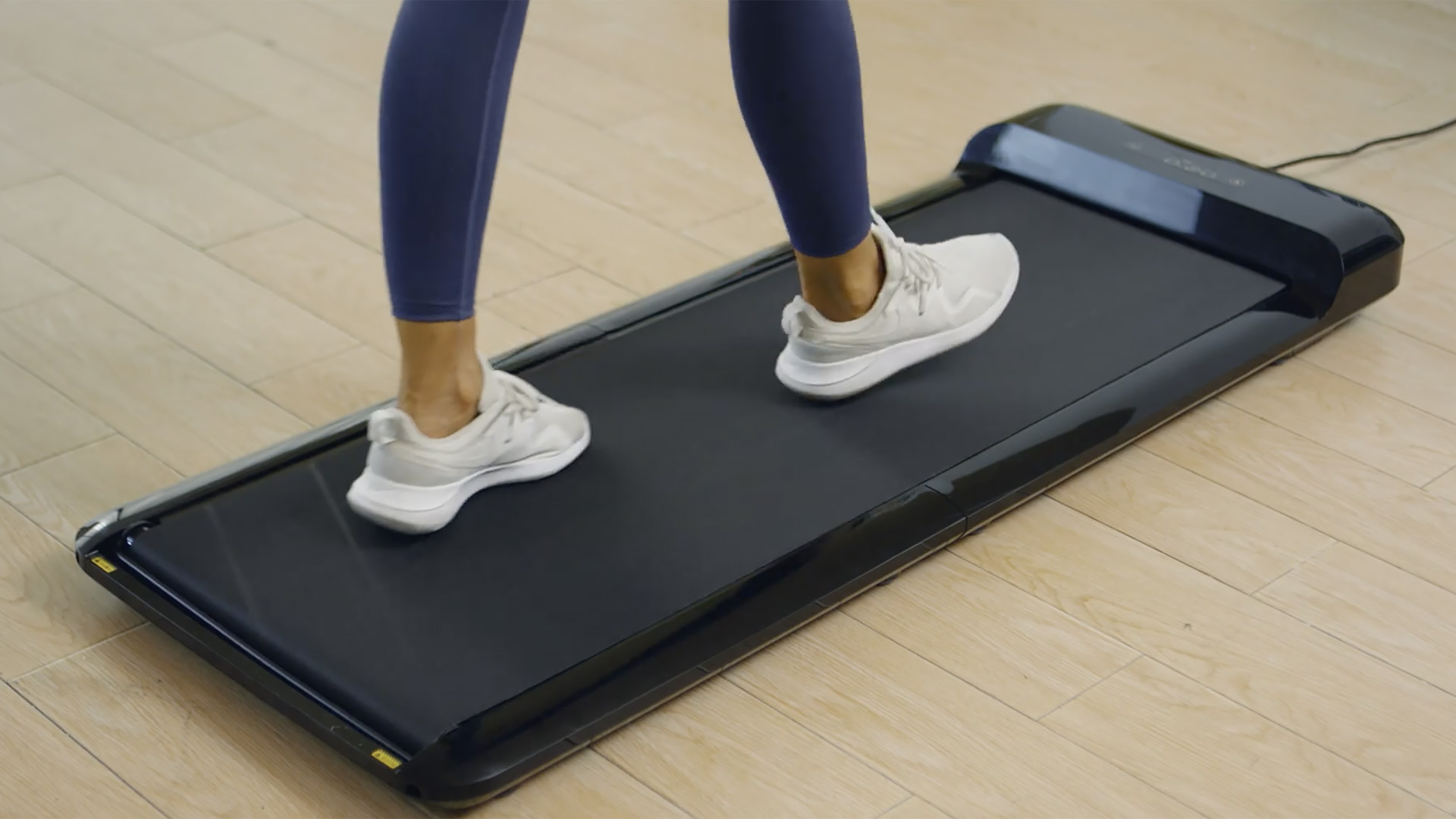

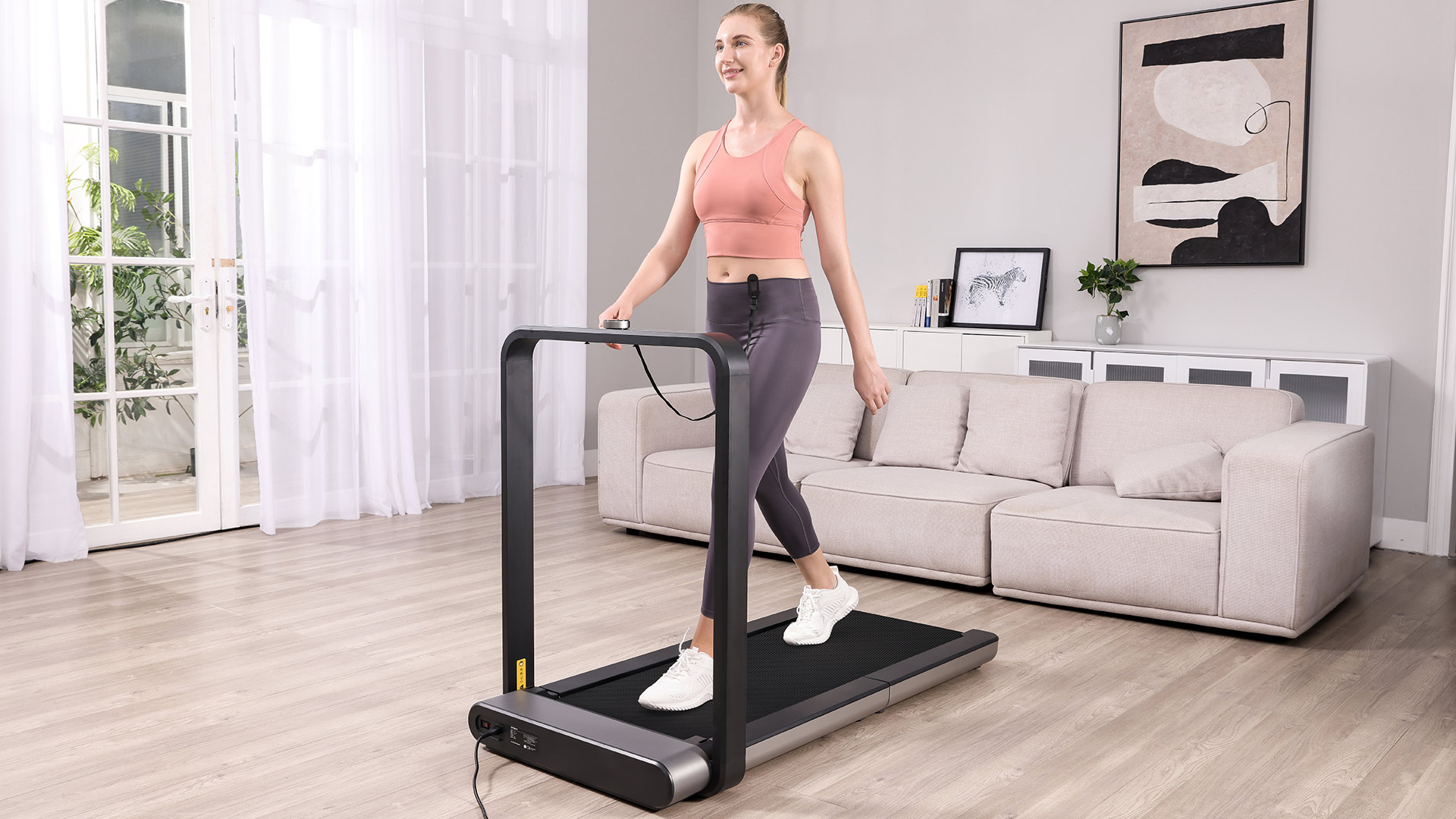
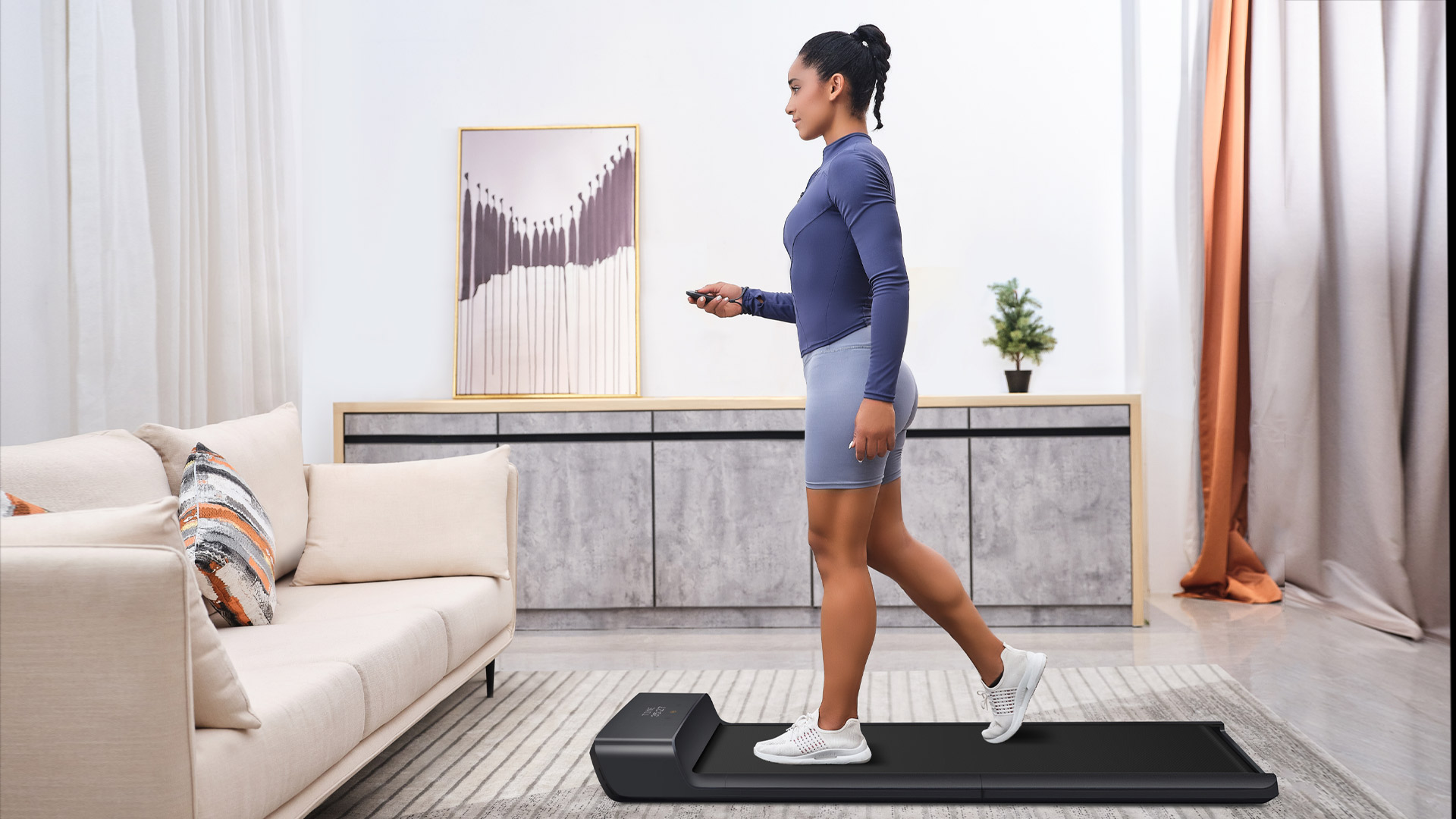


/https://storage.googleapis.com/s3-autonomous-upgrade-3/production/ecm/230914/bulk-order-sep-2023-720x1200-CTA-min.jpg)

/https://storage.googleapis.com/s3-autonomous-upgrade-3/production/ecm/230824/Amanda-8035f52a-7230-4c31-9bda-626fd7c392bf.jpg)